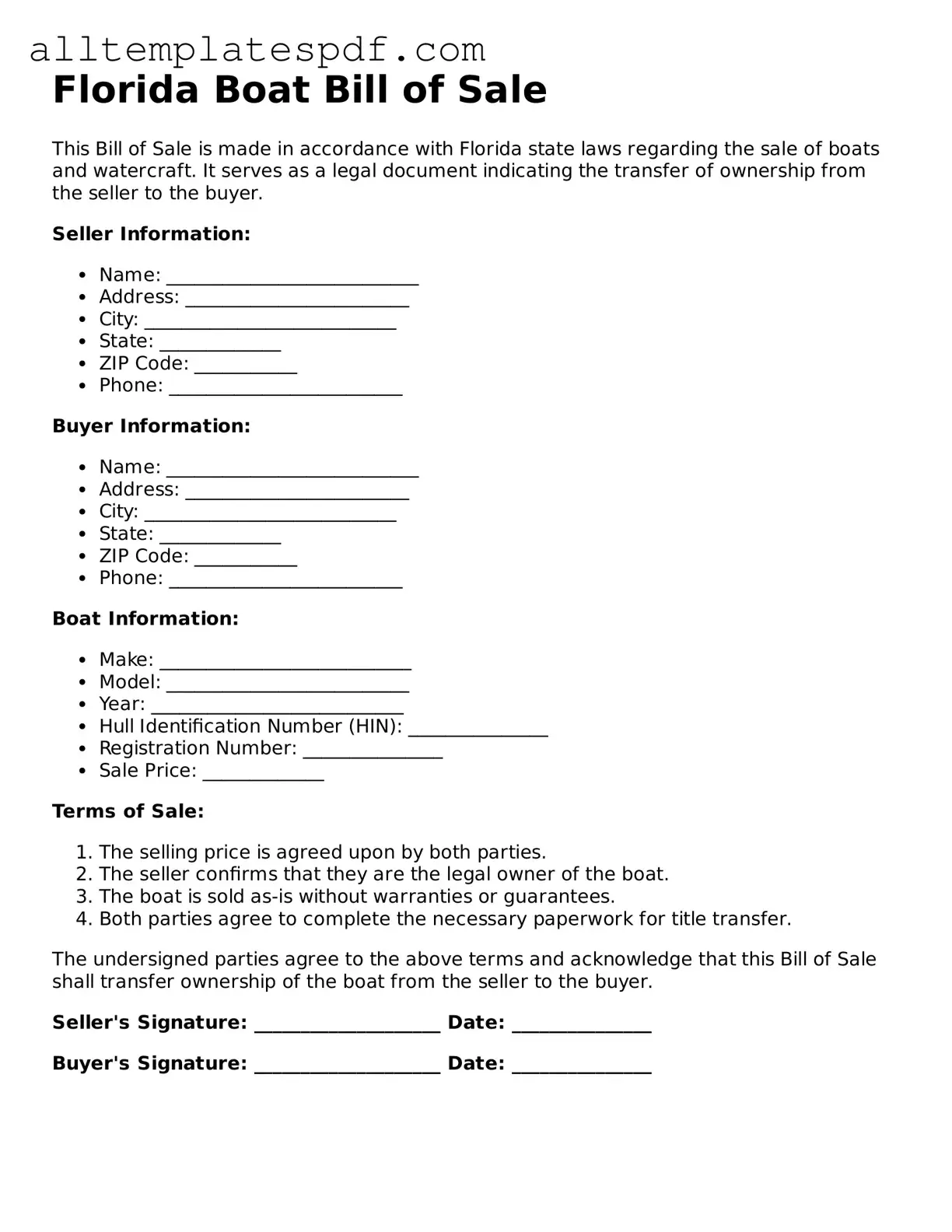Filling out the Florida Boat Bill of Sale form can be a straightforward process, but many people make common mistakes that can lead to complications down the line. One frequent error is providing incorrect or incomplete information about the boat. Buyers and sellers must ensure that the boat’s description, including its make, model, year, and identification number, is accurate. Missing or incorrect details can create confusion and potentially lead to disputes in ownership.
Another common mistake involves the signatures. Both the buyer and seller must sign the form for it to be valid. Sometimes, individuals forget to sign or assume that a signature from only one party is sufficient. This oversight can render the document ineffective, causing issues when trying to register the boat or transfer ownership.
Additionally, many people neglect to include the sale price in the bill of sale. This information is crucial, as it establishes the value of the transaction for tax purposes. Leaving it blank can lead to complications with the Florida Department of Highway Safety and Motor Vehicles when registering the boat.
Not understanding the importance of the date of sale is another mistake. The date should reflect when the transaction occurred. Failing to include this date can create confusion regarding ownership and may affect the buyer’s ability to register the boat in a timely manner.
Another issue arises when people do not keep a copy of the completed bill of sale. It is essential for both parties to retain a copy for their records. This document serves as proof of the transaction and can be vital if any disputes arise in the future.
Lastly, some individuals overlook the importance of having the bill of sale notarized. While notarization is not always required, having a notary public witness the signatures can add an extra layer of protection and credibility to the document. This can be especially beneficial if any questions about the sale arise later.
